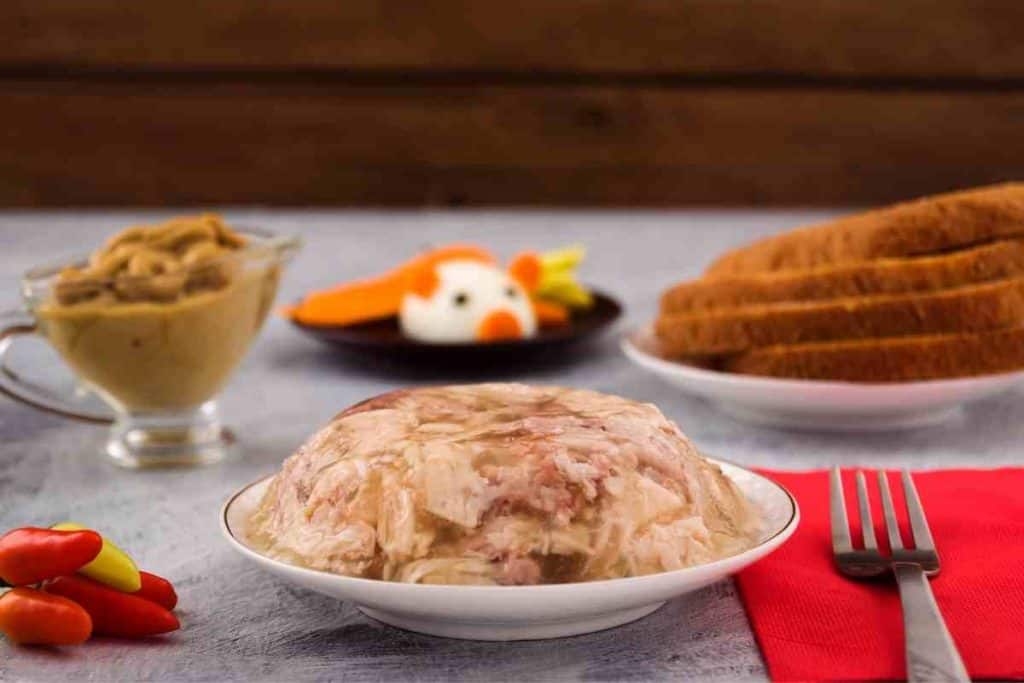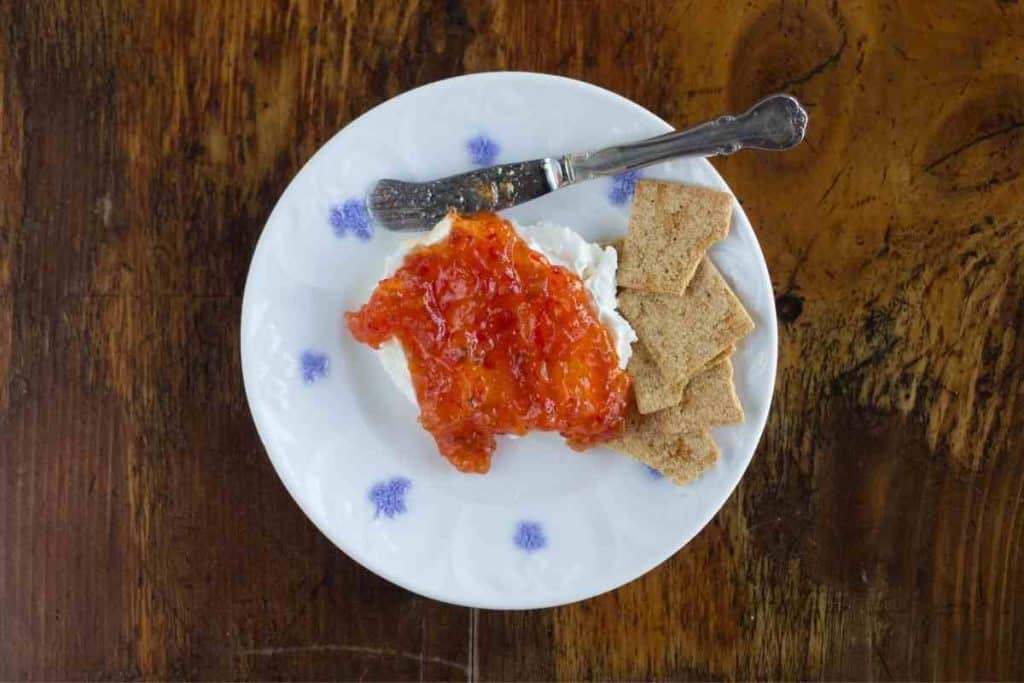This article may contain affiliate links and if you make a purchase after clicking on a link, we may earn a small commission at no additional cost to you.
Pepper jelly is exactly what the name implies: a jelly produced from any sort of pepper fruit. This jelly can be found to fit a wide range of preferences because of the vast range of foods found in the Capsicum genus, Solanaceae family, the scientific classification for peppers.
It could be spicy, lovely, salty, or a mix of these flavors. Green and red bell peppers, jalapenos, and habaneros are among the most common peppers used to make jelly.
Some types of pepper jelly varietals can be developed with a variety of peppers. Read on as we take a deeper dive into the different types of pepper jelly.
What is Pepper Jelly?
Jelly refers to a transparent and uniformly colored and quality jam or fruit preserve.
Pepper jelly, as you might assume, has a distinct culinary application than most other forms of jelly. Because of its strong flavor, it is usually consumed in much smaller quantities than jellies made from fruits such as strawberry and raspberry.
The jelly can be smeared on crackers with cream cheese or Brie, for example, as an hors d’oeuvre.
It could also be used as a sauce on sandwiches, though it is rarely the major component of a sandwich, as a sweeter jelly would be.
Pepper jelly can be dissolved and spread over meat-based meals or it can be used as a garnish for meat or fish or even integrated into dishes like jambalaya. So, what’re the types of pepper jelly?
Types of Pepper Jelly
1. Hot Pepper Jelly

One of the most adaptable condiments out there is hot pepper jelly. Hot pepper jelly seems to always come through, if you need a speedy coating for pork chops, a simple yet wonderful snack, or an addition to cheese.
It has a 5/10 heat level, making it ideal for all of your dining and culinary needs. Everyone will enjoy the proper amount of peppery bite!
The following are some of the popular ways of using Hot Pepper Jelly:
- Sandwich with Hot Pepper Jelly Appetizer and Cream Cheese
- Stir-Fry Sauce
- Chicken Wings with a Hot Pepper Jelly Glaze
- As a dipping sauce.
2. Jalapeno pepper jelly

Jalapeno Jelly is a delectable yummy and fiery Jam for toast or crackers, as well as a coating or dressing for meats.
This flavorful jelly is fantastic as a garnish for a variety of dishes. You will enjoy serving it with cream cheese and cracker.
This jelly is more of a jam than a jelly. Jalapeno peppers, bell peppers, a lot of sugar, vinegar, and pectin go into it.
If you’re tempted to cut back on sugar, resist. This is meant to have a very sweet taste. It is jelly, of course! It also aids in the ideal balance of the jalapenos’ heat.
Believe it or not, you can use this hot but sweetened jelly in a variety of unexpected ways!
- Use it to coat your steak, pork, or fish. This hot pepper jelly will work well in almost any meat recipe that calls for a glaze.
- Serve it with vanilla ice cream.
- Make hot peanut butter and jelly sandwich with it, just like ordinary jelly!
- To produce a cracker spread, layer it over cream cheese on the cracker.
3. Red bell pepper jelly

The red bell pepper jelly is created with delicious red peppers and a bit of spiciness from red cayenne. A great sweet heat would be obtained from about 3-4 cayenne peppers.
Frequently Asked Questions
What is the purpose of hot pepper jelly?
Pork tenderloin, grilled pork chops, and ham all benefit from a coating made with hot pepper jelly. Glaze pork chops on the grill, smother a ham with hot pepper jelly while it is still grilling, or serve heated as a dipping sauce.
What kind of cheese goes well with pepper jelly?
Because of their comparable culinary qualities, aged cheddar and pepper jelly blend well with each other, and when served on soft bread, each mouthful can be elevated.
What’s the point of putting vinegar in pepper jelly?
In the jelly, vinegar serves a number of purposes. First, peppers are low in acid, which is required for the pectin and sugar to interact and enable the jelly set.
Your jelly will not set up as solid without the vinegar. Second, the vinegar’s acid keeps the jelly edible when bottled and stored for a long period.
What’s the best way to keep peppers from drifting around in pepper jelly?
Remove from the fire and set aside to cool entirely, stirring occasionally. Wrap and let aside for 4–6 hours or overnight.
When bottling, this will prevent the peppers from drifting to the surface. When you’re ready to can, sterilize the jars and put them in lukewarm water to disinfect them.
How can Pepper jelly be used?
Pepper jelly is fantastic on crackers with cream cheese or goat cheese, but it’s also good on baked brie, spread on a delicious meal, stacked with ham and goat cheese in an extremely special montecristo, or even as a coating for meat or vegetables.
Conclusion
Pepper jelly is a delectable paradox, with just the right amount of sweetness and heat. On a cracker with cream cheese, it’s nothing short of spectacular.
This dish is incredibly adaptable; use whatever color peppers you have on available and alter the heat level to your preference, ranging from mild to fiery. When using a range of pepper colors, though, your jelly may turn a less-than-appealing hue of cider brown once cooked.
As a result, it’s best to limit yourself to red and orange peppers. Preferably, all of your peppers should be from the same color family, so avoid mixing red bell peppers with green jalapenos if at all possible.
A batch of all-green jalapeno peppers will likely work too though, though the brilliant jade color might mellow to a more olive shade of green when prepared.